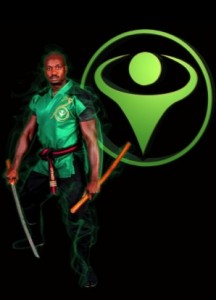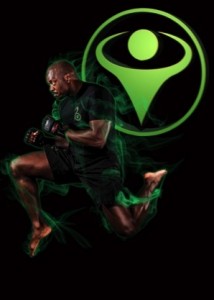By: Hakim Isler
 People always ask me if NMA (Ninja Martial Arts) is better than the martial art known as MMA (Mixed Martial Arts). The first thing I am sure to say is that every art can be good when taught by a good teacher and learned by a good student. So my view is that all are valid for what they were created for when taught properly.
People always ask me if NMA (Ninja Martial Arts) is better than the martial art known as MMA (Mixed Martial Arts). The first thing I am sure to say is that every art can be good when taught by a good teacher and learned by a good student. So my view is that all are valid for what they were created for when taught properly.
But there is a very important difference between the two: MMA is designed for competition. Fighters train according to a specific set of rules to face a specific opponent. Ninja Martial Arts, on the other hand, trains individuals to face an infinite array or circumstances in everyday life.
The concept of MMA (Mixed Martial Arts) has been around for a long time. The Greeks had a sport called Pankration that allowed competitors to use striking and grappling both standing and on the ground to win a competition. Other versions of this mixed style fighting have sprouted in modern years like Valetudo, Shoot-Fighting, etc.
The competition that made MMA popular in America was the UFC (Ultimate Fighting Championship). In this competition fighters from various backgrounds could come and compete against each other with limited rules. The first UFC events were closer to No Holds Barred matches – there were no gloves, no weight classes, and few rules. A fight would only be stopped for severe cuts, knockouts, referee stoppage or throwing in the towel. The rules were no biting, groin shots, or eye gouging – everything else was fair game.
Each competitor had to fight multiple times as he moved closer to being named the over all winner. While some of the competitors were not well rounded, those that were often were more successful.
Today’s UFC events have weight classes, as well as a whole slew of additional rules. Originally, there was no way to predict who a competitor might face as he made his way through the “last man standing” style tournaments. Today, matches are set well in advance and competitors can spend months training to fight a specific opponent and tailoring his strategy to this one match.
So to sum it all up: MMA is designed for competitions with specific rules. Fighters are well-rounded, but only within the confines of those rules. Competitors train for one-on-one combat only, and often tailor their training for the opponent they know they will face in an upcoming match. MMA athletes may study different arts, but will focus on the skills needed for the match: striking, grappling and throwing.
How Ninja Martial Arts Are Different
 Ninjutsu was created in 11th century Japan as a way to protect the Ninja family’s way of life. It focused primarily on intelligence gathering as a way to stay hidden from their aggressive and oppressive adversaries. Those adversaries were better financed, equipped, and supported, so fighting was a last resort.
Ninjutsu was created in 11th century Japan as a way to protect the Ninja family’s way of life. It focused primarily on intelligence gathering as a way to stay hidden from their aggressive and oppressive adversaries. Those adversaries were better financed, equipped, and supported, so fighting was a last resort.
Of course there were times for more direct action, as well as times that the Ninja would find that they had to fight to escape from behind enemy lines. Ninja could operate as teams, however they often went out on one-man missions and thus they needed an art that could support the demands of an unpredictable set of circumstances.
Therefore there were 18 skills a traditional ninja had to be proficient in before he/she could be deemed fit for duty. Those skills would range from stick fighting, knife fighting, grappling (standing/ground), throwing, explosives, navigation, psychological warfare, undercover work, etc. Later when the Portuguese introduced firearms to Japan the Ninja also became proficient with firearms. They were espionage artist first, and commando warriors second with safety of community at heart. Their goal was to stay invisible and keep their community invisible to the enemy. They used diversity, adaptability, invisibility as their main principles of staying current and safe. To not have to fight was the only true way to win and stay safe. However if they had to fight winning was the only option thus nothing was off limits.
One could believe that because Ninjutsu was created so long ago that it is out dated and thus would not be effective in the modern day. But the foundation of Ninjutsu is adaptability and diversity, so the true Ninja practitioner is always relevant.
Ninja have always sought to understand the various potentials of danger. They understood these dangers where vast and could come at you in various ways. There are no rules governing the type of obstacle, the time in which it presents itself and the dynamics of that challenge. Knives, sticks, guns, multiple opponents, money, position, personal weaknesses are all issues for the Ninja.
They have always understood their capabilities, acknowledging that they could not survive if they had one method for dealing with an unlimited potential of dangers. What if the Ninja faced an opponent that is stronger, faster, more intelligent or more connected? How could he/she still win? What if the opponent attacked the Ninja mentally or emotionally and not physically? The Ninja faces these truths and his/her goal is to be able to deal with all these challenges.
NMA (Ninja Martial Arts) is also different because it has 4 major ways of dealing with oppression and danger on a mental, emotional and physical level. These four concepts are referred to as elements. The Elements are Earth, Water, Fire, and Wind. These four concepts give the Ninja a wide variety of tools for dealing with a plethora of situations. In MMA a fighter will fight from one of these Elements. That is what they are comfortable with so that is what they do. The Ninja does not believe in such single mindedness.
Ninja Martial Arts follows the tradition of ancient Ninjutsu, however it was adapted in the 80’s to focus on American issues and laws. The foundation is still the same and it is what American’s need. It provides a way to be connected, aware, adaptive and proactive. The Ninja way is to find power through knowledge. Knowledge of self and the dynamic environment is the Ninja aim.
The Ninja stays invisible to danger, but should it find him/her the goal is to find the blind spot, the weakest chink in the opponent’s armor. The only fight is the one the enemy seeks. The Ninja is concerned with safety and winning – which is not about fighting the opponent as much as it is about setting the conditions for the opponent to fight himself. A well trained Ninja uses his/her mind to help the opponent defeat himself. The only way to do this is to have a wide range of tools and tactics to draw from.
To Sum It Up
If you’re looking for a system that trains you to fight in competitions with set rules, MMA may be the right choice for you. And possibly if you find yourself in danger outside in the “real world” you may have the skills needed to defend yourself – as long as you face a single attacker who isn’t bigger, stronger, or better trained.
Ninja Martial Arts is for you if you’re looking for a system that develops you as an individual and prepares you to face an infinite variety of real world difficulties. There are no trophies or competitions. Just the knowledge that you can face anything life throws at you and overcome.
Couldn’t you use this type of true versatile strength in your life? A power that doesn’t pretend you have all the physical attributes to overcome any obstacle; a power that does not restrict you to how you can deal with danger. Instead, a power that teaches you to utilize all aspects of your human potential to solve any scenario. A wisdom that has been refined over 900 years with the goal of growing the one common denominator in all struggle and triumph: the human being.
Join our tradition and become the legacy. Join Modern Ninja Self Defense at Elevo Dynamics.
 Hakim Isler (To-Shin Do Ninjutsu Head Instructor) has been involved in the martial arts for 24 years and the security field for 10 years. Hakim is a veteran of the Iraq war and an ex-member of the Army Special Operations community, where he received Arabic language training, survival training, evasion training, paratrooper training, etc. He holds a 4th degree black belt (Yondan) in To-Shin Do (modern Ninjutsu), as taught by world-renowned author and Black Belt Hall of Fame member Stephen K. Hayes. Hakim is also a practitioner of American Jiu Jitsu, Gracie Barra Jiu Jitsu and FCS Kali.
Hakim Isler (To-Shin Do Ninjutsu Head Instructor) has been involved in the martial arts for 24 years and the security field for 10 years. Hakim is a veteran of the Iraq war and an ex-member of the Army Special Operations community, where he received Arabic language training, survival training, evasion training, paratrooper training, etc. He holds a 4th degree black belt (Yondan) in To-Shin Do (modern Ninjutsu), as taught by world-renowned author and Black Belt Hall of Fame member Stephen K. Hayes. Hakim is also a practitioner of American Jiu Jitsu, Gracie Barra Jiu Jitsu and FCS Kali.


